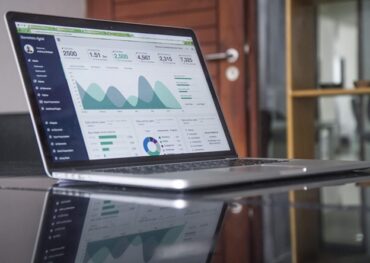
Given the unique challenges of working with real-time data, organizations need to consider which tools will help them deploy and manage AI and ML models in the most efficient manner possible.
Analyzing real-time data has always presented challenges for those working with ML models as they look to increase the accuracy of their inferences with the most recent data. Because real-time data is delivered too rapidly for manual analysis or traditional software meant for data organization, only AI and ML can make sense of the vast amounts of streaming data. But while working with real-time data is one of the most valuable applications of ML models, it presents several issues for those looking to leverage this tool for data analysis. Here we’ll discuss some of the top challenges that are faced by those attempting to use real-time data and potential ways to conquer them.
In what use cases do businesses need to use streaming rather than batch data? Overall, data streaming can be useful for real-time automated decision-making, which may involve leveraging a machine learning model in a production environment on complex datasets. Examples of this include algorithmic trading in high-frequency trading, anomaly detection for medical devices, intrusion detection in cybersecurity, or e-commerce conversion/retention models. Using batch data, therefore, falls into that “everything else” bucket where decisioning and context in real time doesn’t matter so much as having a large volume of data to analyze. For this, examples include demand forecasting, customer segmentation, and multi-touch attribution.
Challenges Of Using Real-Time Data
While utilizing real-time data to train your ML models on a continuous flow of data has advantages like adapting rapidly to change and being able to save on data storage space, there are challenges as well. Switching your models to real-time data can include additional overhead and may not deliver your ideal results if these challenges are not properly accounted for.
Undefined Definition of Real-Time
Working with real-time data presents several challenges, starting with the very notion of real-time data itself. “Real-time” is a phrase that various people interpret differently. In the context of analytics, some individuals may think real-time implies obtaining answers right away, while others don’t mind waiting several minutes from the moment the data is collected until the analytics system responds.
These differing definitions of real-time can create a problem of undefined outcomes. Consider a scenario in which the management team has different expectations and a different understanding of real-time analytics than those chosen to implement it. Unclear definitions can lead to uncertainty regarding potential use cases and the business activities (both present and future) that can be solved.
See also: Using DataOps For Hybrid, Real-Time Data Management
Constant Data Speed and Volume Changes
In general, real-time data does not flow at consistent speeds or volumes, and it is tough to predict how it may behave. Unlike handling batch data, it’s not practical to constantly restart the task until a flaw is found in the pipeline. Since data is constantly flowing, any errors in handling the data can have a domino effect on results.
Standard troubleshooting processes are further hampered by the limited nature of real-time data processing phases. As a result, while testing might not uncover every unexpected error, newer testing platforms can better regulate and mitigate issues.
Quality Of Data
Getting useful insights from real-time data also depends on the caliber of the data. A lack of data quality will spread across the whole analytics workflow in the same way that bad data collection may affect the performance of the entire pipeline. Nothing is worse than business conclusions drawn from false data.
By sharing responsibilities and democratizing data access, you can provide a high level of concern for the correctness, comprehensiveness, and integrity of data. Effective solutions will make sure that everyone in every function can recognize the value of accurate data and encourage them to take ownership of preserving data quality. Also, to guarantee that only trustworthy data sources are used, a similar quality policy must be applied to real-time data using automated procedures, as this reduces unnecessary analytics efforts.
Various Data Sources and Formats
Real-time data processing pipelines may face difficulties due to the variety of data formats and the ever-increasing number of data sources. For instance, in eCommerce, campaign monitoring tools, e- activity trackers, and consumer behavior models all keep track of web activity in the online world. Similarly, in manufacturing, a wide variety of IoT devices are utilized to gather performance data from various pieces of equipment. All of these use cases have different methods for data gathering and often have different data formats as well.
Due to these changes in the data, API specification changes or sensor firmware updates may result in interruptions of the real-time data flow. To avoid erroneous analytics and potential future issues, real-time data must take into consideration the situations where the ability to record events is absent.
See also: Boosting Digital Transformation with Real-time Data APIs
Outdated Heritage Techniques
A variety of new information sources pose a problem for enterprises. The scale of the current processes to analyze incoming data has grown substantially. Gathering and preparing information using an information lake on-premises or in the cloud may require more testing than expected.
The issue is mostly rooted in the use of legacy systems and technology, which necessitate a constantly expanding set of skilled information designers and engineers to ingest and synchronize information and create the examination pipelines required to communicate information to applications.
Given the unique challenges of working with real-time data, organizations need to consider which tools will help them deploy and manage AI and ML models in the most efficient manner possible. A simple, easy-to-use interface that would allow anyone on your team to utilize real-time metrics and analytics to track, measure, and help improve your ML’s performance would be ideal. Basic observability functions like a real-time audit trail of the data consumed in production can help your team identify the root cause of your obstacles with ease. Ultimately, the competitiveness of a business may depend on its ability to derive actionable business insights from real-time data with data processing pipelines that are optimized for massive volumes of data while still providing visibility into model performance.






























